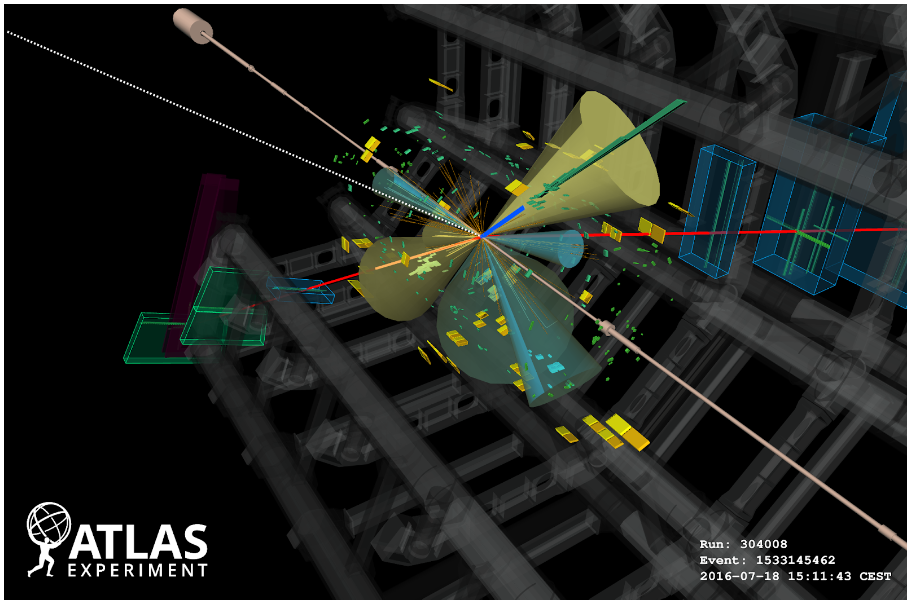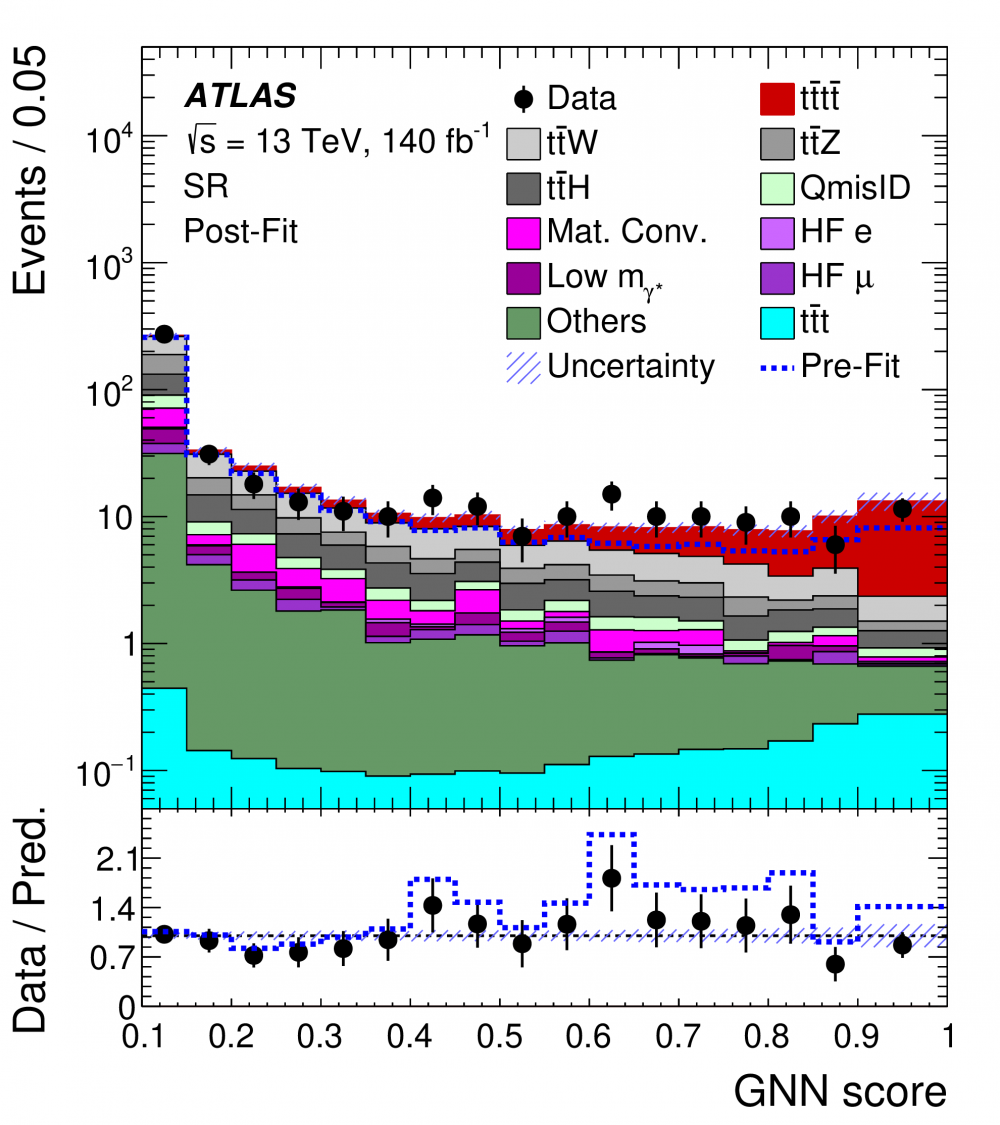
Four top quark candidate with three leptons, seven jets of which four are labelled as coming from b-quark.
The ATLAS collaboration announced at the Moriond conference the observation of simultaneous production of four top quarks. This is one of the rarest and heaviest processes ever observed at the Large Hadron Collider (LHC). This measurement, coordinated by IRFU, allows to test the Standard Model of particle physics in its most complex predictions.
Being the heaviest particle in the Standard Model, the top quark may be the key to discover new phenomena beyond the Standard Model. The study of the production of four top quarks is of particular interest in this respect because the existence of new particles or new forces could alter the production rate of four top quarks predicted by the Standard Model.
The ATLAS collaboration has already highlighted this production in 2020 by analysing the LHC Run-2 data set at 13 TeV recorded between 2015 and 2018. The search was conducted in the channel where two or three top quarks decay into leptons, leading to a final state with two leptons of the same charge or three leptons. Although these signatures correspond to only 13% of all possible decays of four top quark production, they have the advantage of being contaminated by less background, making it easier to isolate the signal.

Comparison of the GNN output between the data (black dots) and the predictions after fitting to the data. The signal from four top quarks is shown in red.
For this new result, ATLAS physicists have revisited the analysis of the same batch of data, exploiting the latest developments in detector performance and particle identification algorithms, thanks to the extensive knowledge of the detector over the years. The new analysis is also using new analysis techniques and a better understanding of the backgrounds. In particular, a new technique to estimate the main background, based directly on control regions, has been developed. To further increase the separation between the signal of four top quarks and the backgrounds, a more sensitive artificial intelligence algorithm, called a graphical neural network (GNN), has been used. The output of this GNN is shown in the figure below demonstrating its power to separate the signal (in red) from the various backgrounds.
These improvements finally allowed the ATLAS collaboration to significantly increase the sensitivity of the analysis and to announce the observation of the simultaneous production of four top quarks with a statistical significance of 6.1 standard deviations (beyond the 5 standard deviations usually used as a threshold to claim observation). The measured production rate is 1.9 times larger than the standard model prediction, but is nevertheless compatible with it due to the size of the errors in the measurement.
In addition to measuring the production rate of four top quarks, ATLAS physicists have also been looking for signs of new physics in this production, in particular in the coupling of the top quark with the Higgs boson or with other top quarks, without success so far.
The ATLAS collaboration will continue its quest for precision with the LHC Run-3, which started in 2022. The new data collected at a higher center of mass energy of 13.6 TeV will reveal whether the signal is really consistent with the predictions of the Standard Model or whether it hides new, as yet unknown phenomena.
• The ultimate constituents of matter › Particle physics at colliders
• The Particle Physics Division
• ATLAS
• ATLAS



